Thi hamlet communal house
(BNP) - According to local people, the communal house of Thi hamlet, Dao Vien commune, Que Vo district has a long history. During the resistance war against the French colonialists, the communal house was completely destroyed. In 2001, the local people rebuilt the communal house as it is today on the old ground in the traditional appearance.
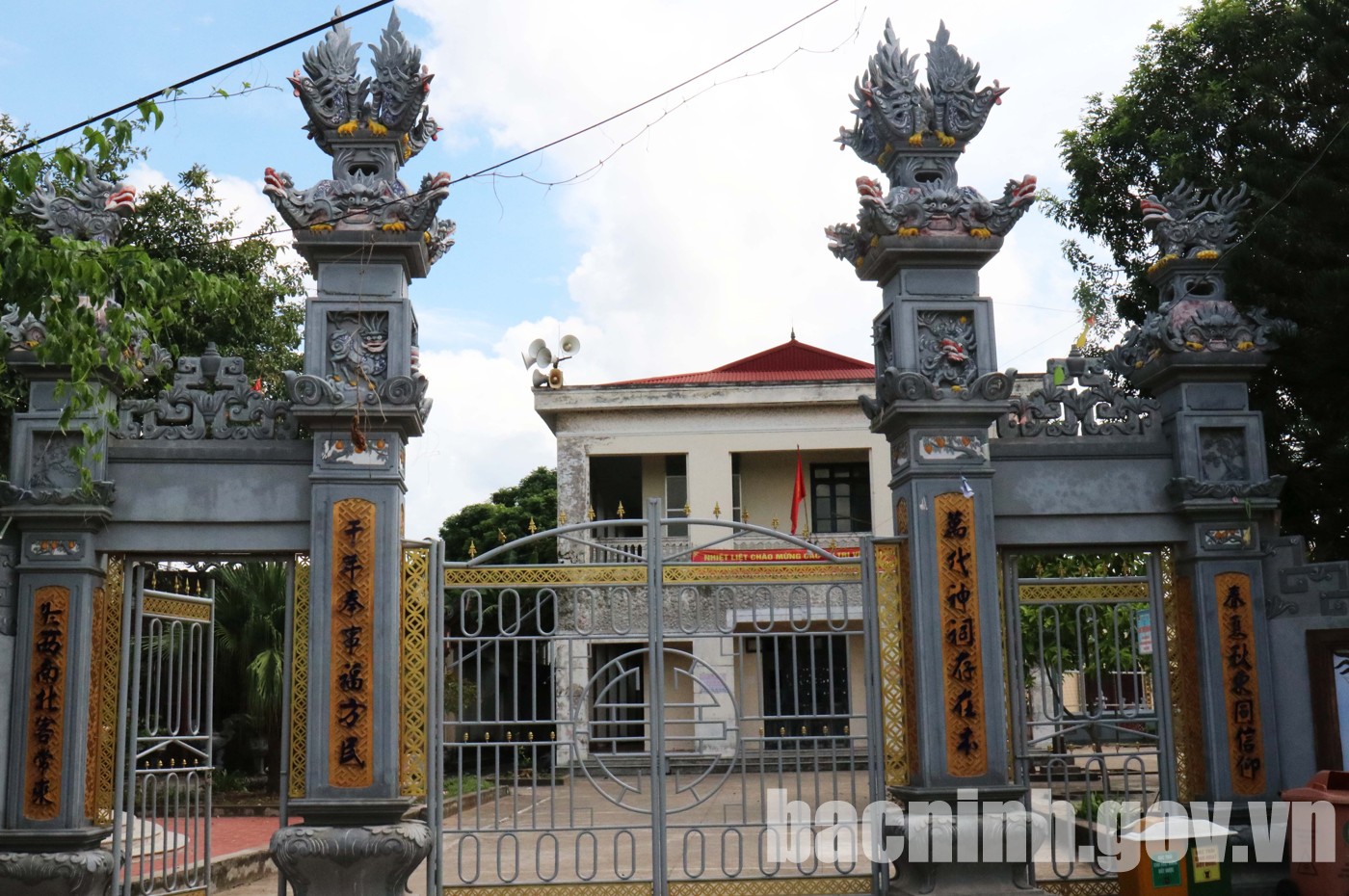
The gate of communal house and pagoda of Thi hamlet.
The communal house is a place to worship Ngo Minh Cong, who was instrumental in helping King Hung Due Vuong to defeat the enemy and protect the country. The communal house is located on a land plot with an area of 608m2.

Thi hamlet’s communal house
The communal house has an architecture of Chinese “Dinh” letter, including Tien te (Front Ceremonial Hall) and Hau cung (Emperor’s Harem). Tien te has 3 compartments, 2 lean-tons.

The ordinations of the Nguyen Dynasty.
Typical artifacts include: 01 worshiping statue, 01 worshiping throne, 03 stone steles, 05 ordinations, Nguyen Dynasty; 02 diaphragms, 02 pairs of couplets, 01 incense, 20th century.
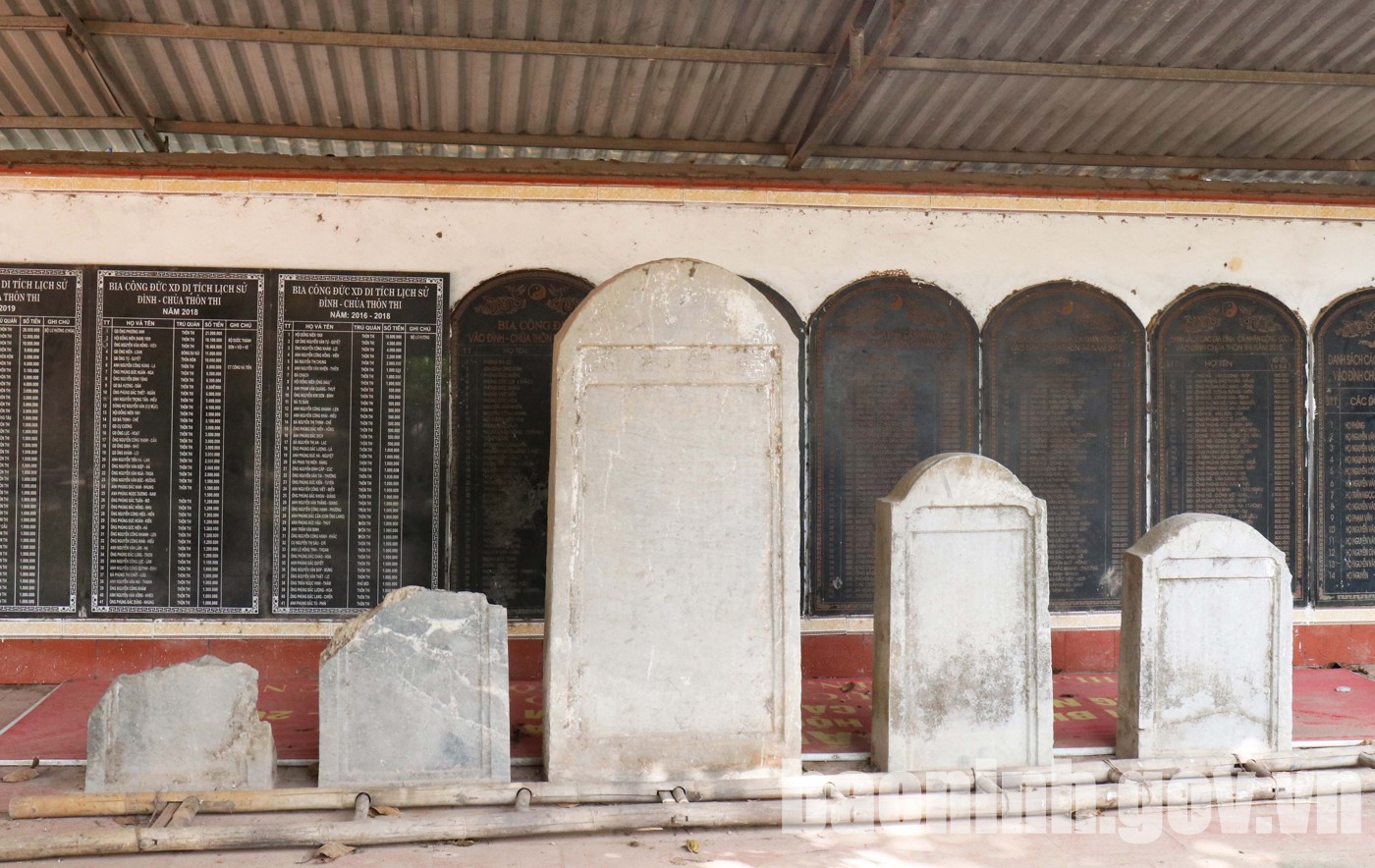
Ancient stone stele in the communal house.
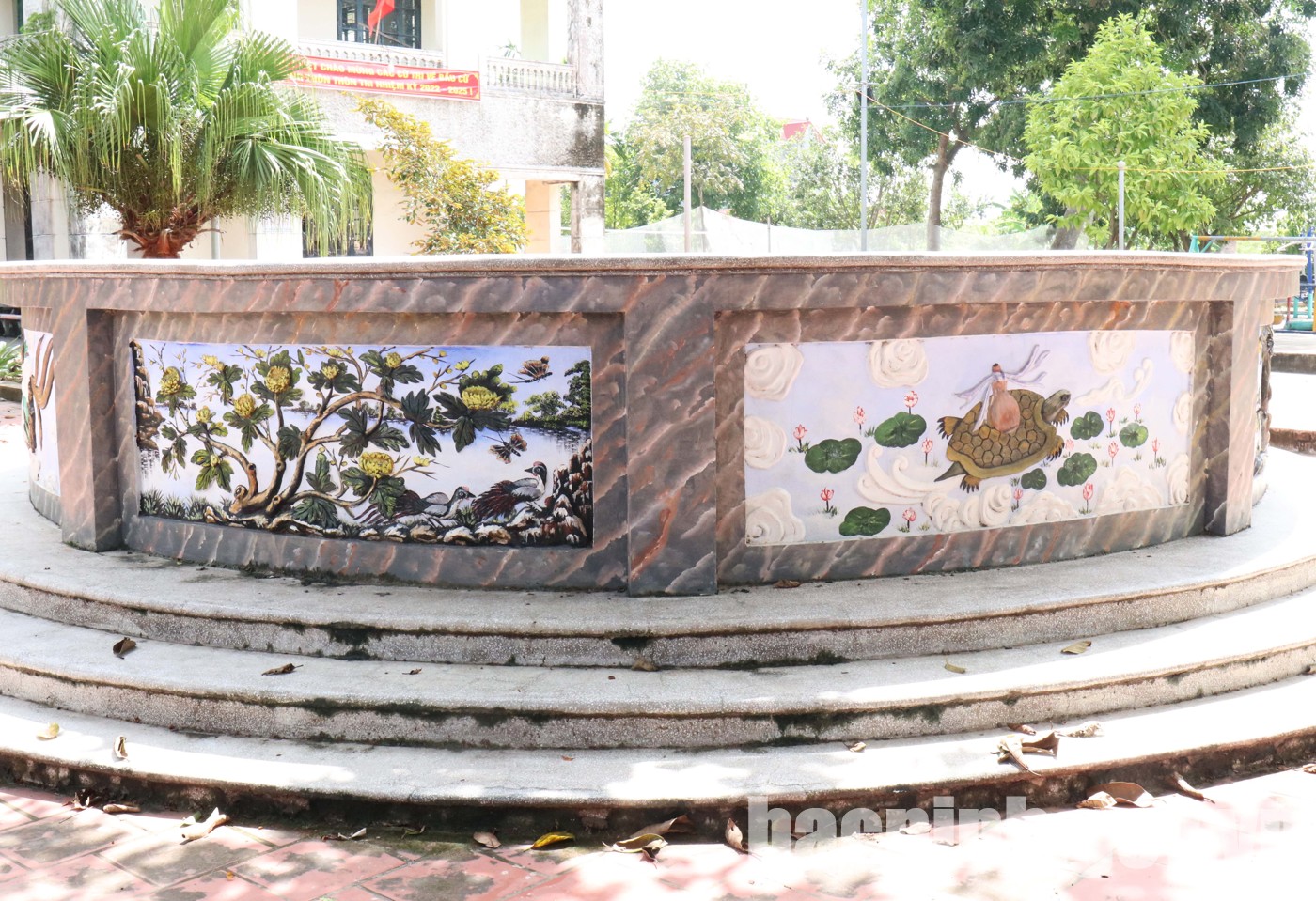
Pearl well in the communal house.
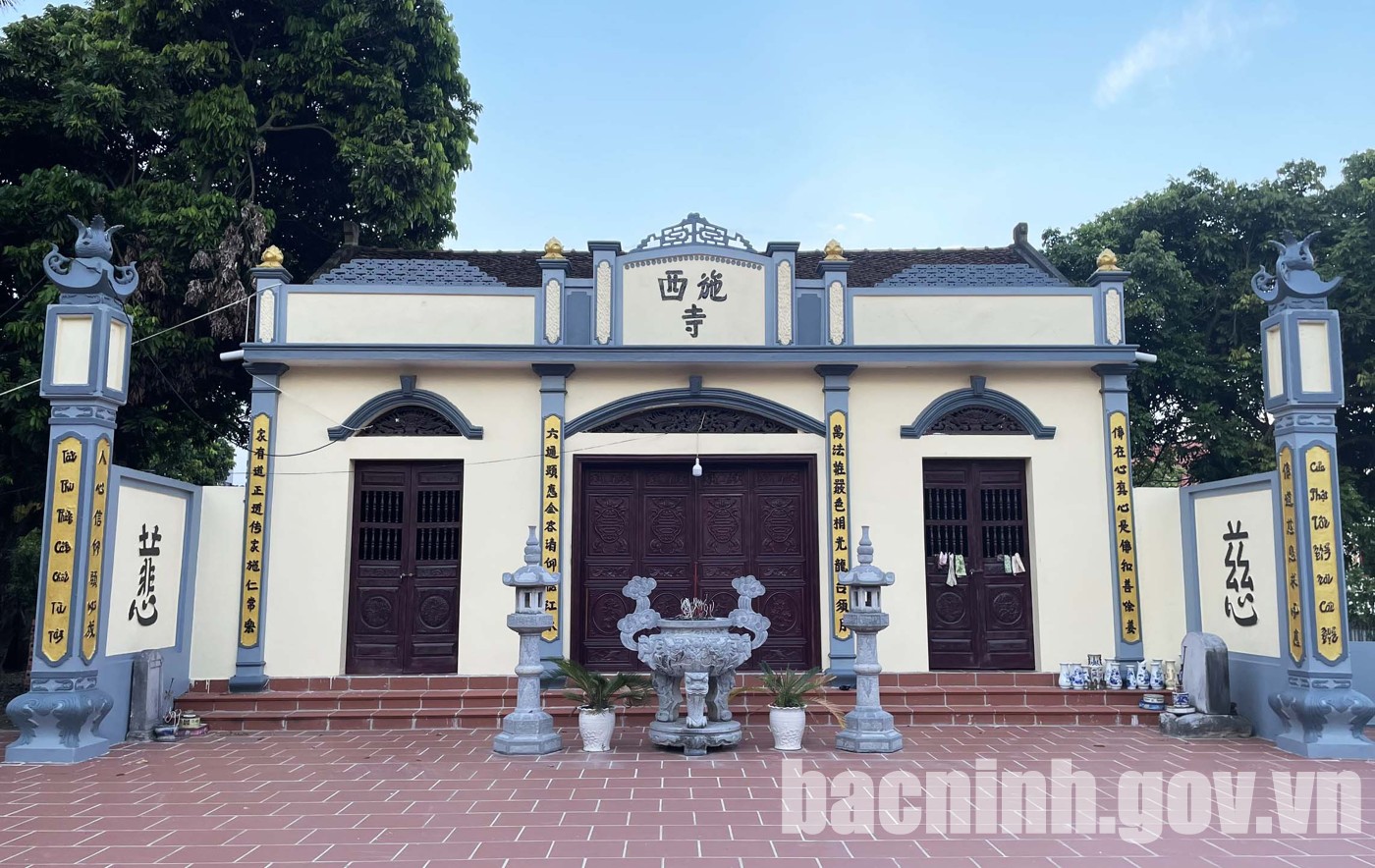
Tam Bao building
Thi hamlet’s pagoda (Tay Thi Tu) was built in the Le Dynasty (17th century). During the resistance war against the French colonialists, the temple was completely destroyed, leaving only a few ancient statues. After peace was restored, the people rebuilt the pagoda to worship Buddha and Mother.
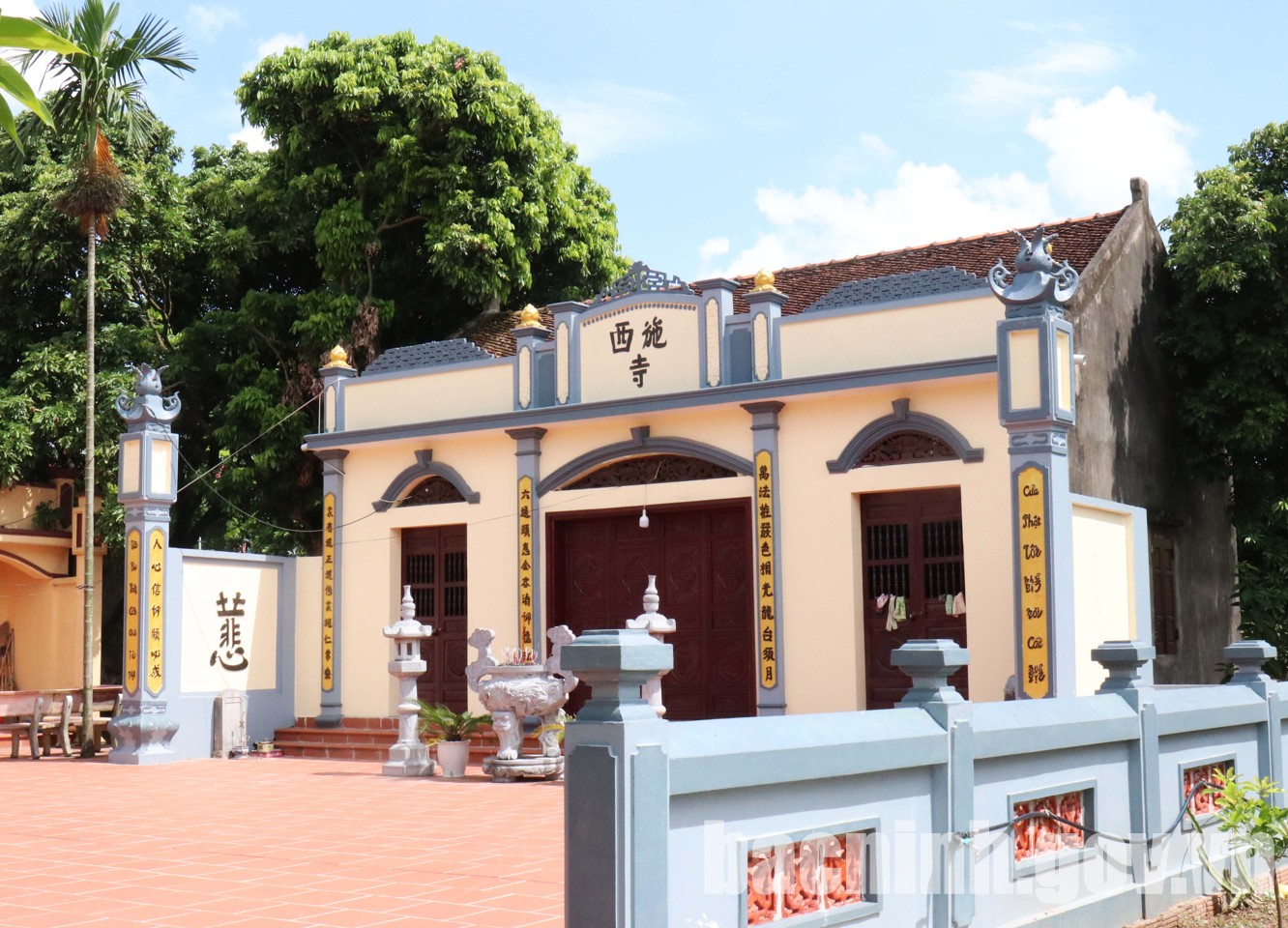
Tam Bao building
Tam Bao building has an architecture of Chinese “Dinh” letter.
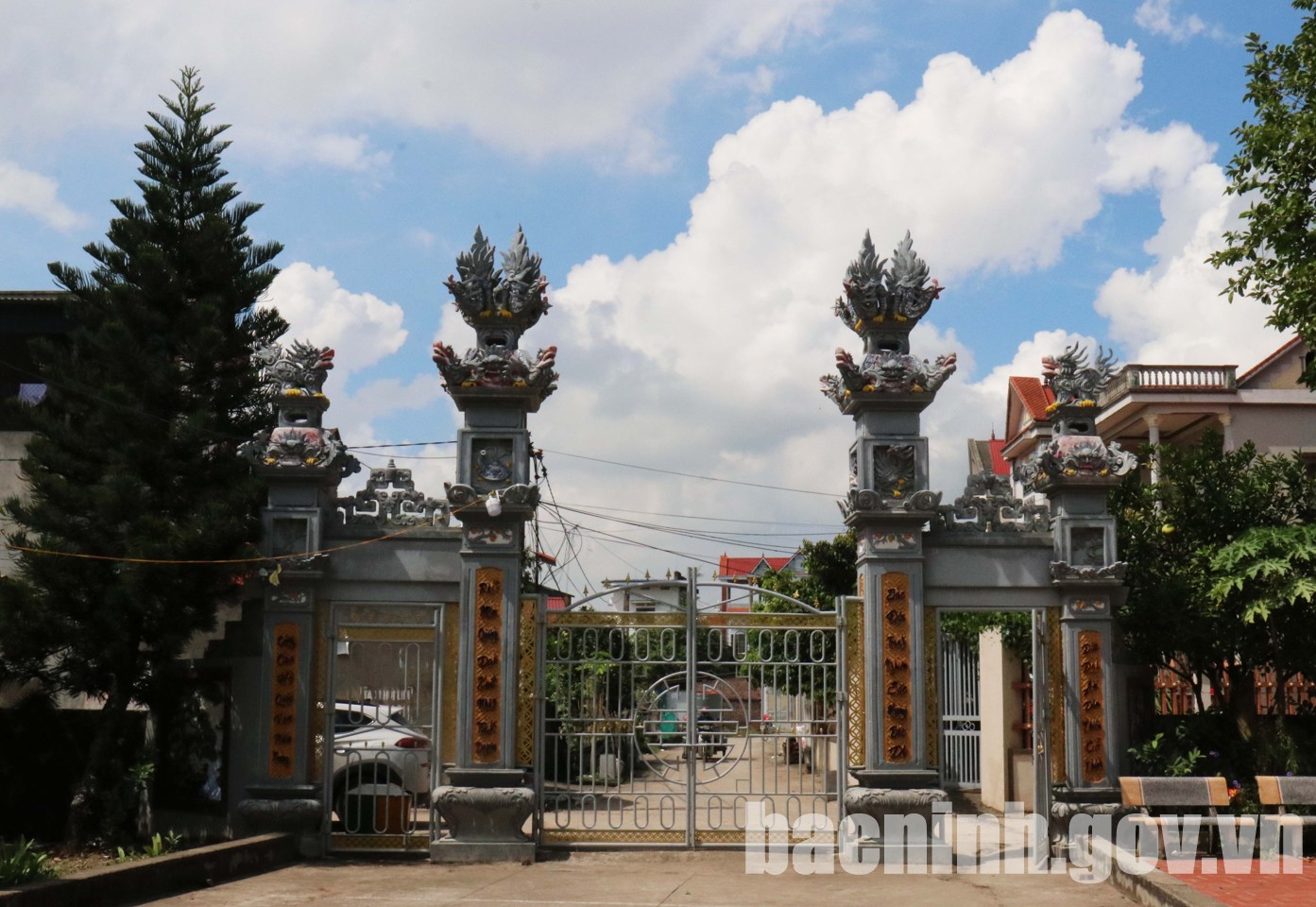
Thi hamlet’s pagoda was built a long time ago to worship Buddha and Mother.
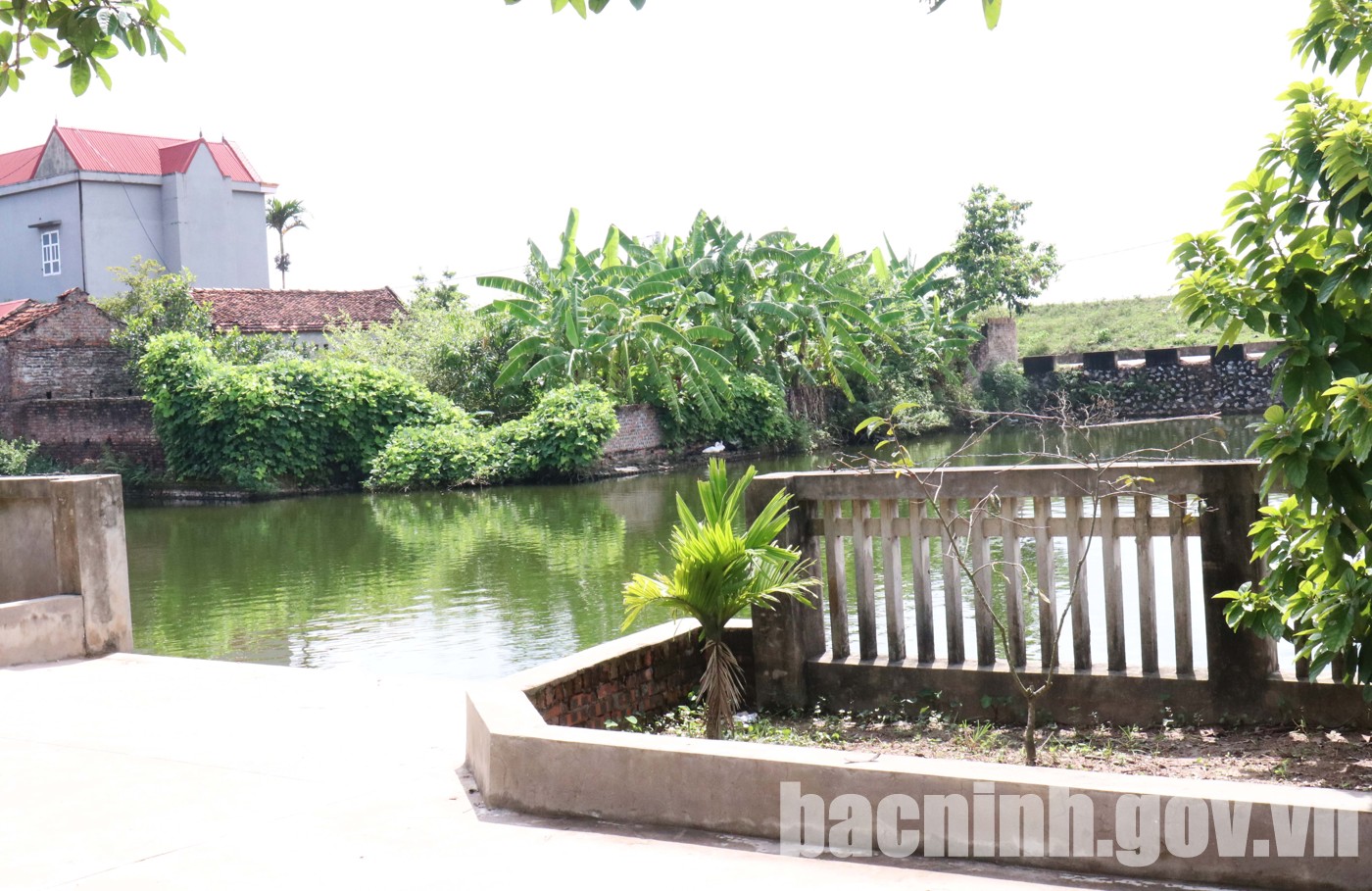
Fish ponds in communal houses and pagodas.
The communal house and pagoda in Thi village were ranked as a provincial-level historical and cultural relic in Decision No. 127/QD-UBND, dated February 9, 2015.






